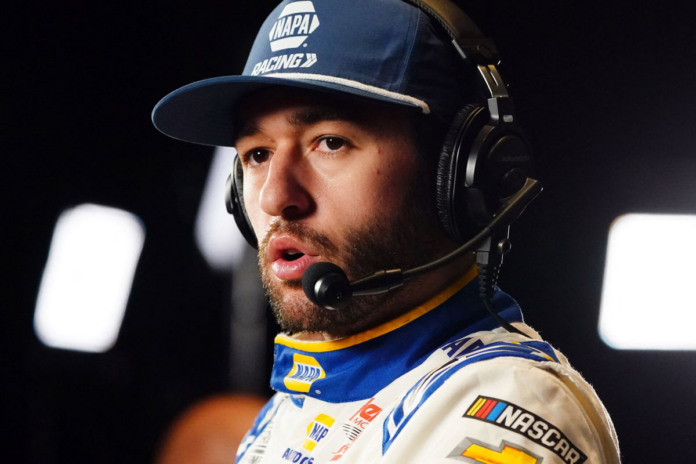Let’s be honest—when NASCAR announced the Clash was moving from the flashy Los Angeles Memorial Coliseum to the no-frills, quarter-mile Bowman Gray Stadium, it felt like a gamble. For years, the Coliseum had been NASCAR’s shiny new toy, a place to woo younger fans and expand the sport’s reach. Bowman Gray, on the other hand, is the polar opposite: a gritty, historic short track where tempers flare, paint is traded, and the crowd is just as, if not more rowdy than the racing.
But here’s the thing: Sometimes, you have to go back to move forward. And if Chase Elliott’s performance—and his words—are anything to go by, NASCAR’s move of staying true to its history might be its smartest move in years.
Elliott’s vision: Save the tracks, save the sport
ADVERTISEMENT Article continues below this ad
Chase Elliott is a historian of the sport just as much as he is a driver. Coming from a storied lineage of NASCAR drivers like father Bill Elliott, when Chase talks about the importance of historic tracks like Bowman Gray and Rockingham, you can tell it’s more than just lip service. In a recent chat with Matt Weaver, Elliott laid out a compelling case for why NASCAR needs to protect its roots.
“I think it’s paramount, honestly,” Elliott said. “You hate to see those cornerstone race tracks—the ones that paved the way for NASCAR to be what it is today—shut down and go away. If us having a race, or in Rockingham’s case, Xfinity and Trucks testing there, can keep that place alive and prevent it from being bulldozed, that’s a victory for motorsports.”
Elliott’s words hit home, especially when you consider the recent revival of Bowman Gray and Rockingham Speedway. Once a NASCAR staple, “The Rock” had been all but forgotten after its last Cup Series race in 2004. But thanks to state funding and a renewed focus on grassroots racing, the track is back in the spotlight.
This week, Rockingham hosted its first full-fledged test session for Xfinity and Truck Series teams, and the response was electric. Drivers like Daniel Hemric and Corey Heim raved about the track’s new asphalt and widening groove, while fans packed the grandstands to soak in the nostalgia.
“I feel like you’d be missing out if you didn’t get that feeling,” Hemric said. “This is a place my grandparents came to watch races. It’s cool to experience some of what they lived through.”
For Elliott, his proposal isn’t solely about preserving history—it’s about building a future where NASCAR can thrive. By supporting historic venues, the sport can reconnect with its core audience while still exploring new markets. “We can expand and grow and try new things while keeping these places alive,” Elliott said. “It’s a big deal, and we need to do everything we can to make sure they survive.”
The Clash: Elliott dominates but Bowman Gray delivers
Of course, Elliott didn’t just talk the talk—he walked the walk. At Bowman Gray, he put on a clinic in short-track racing, leading 171 of 200 laps to claim his first Clash victory. The win was a fitting tribute to the historic venue, which hadn’t hosted a Cup Series race since 1971.
“This environment is special,” Elliott said in his post-race interview. “This is a place that has a deep history in NASCAR. I think they deserve this event. Truthfully, I hope we didn’t disappoint. It was fun for me, at least.”
ADVERTISEMENT Article continues below this ad
The race itself was a mix of chaos and strategy. While the heat races and last-chance qualifier were filled with drama—spins, retaliations, and tempers flaring—the main event was relatively tame by Bowman Gray standards. Elliott’s dominance meant there were fewer overtakes, but the tension was palpable every time Denny Hamlin or Ryan Blaney closed in.
Hamlin, who finished third, had been vocal about his preference for the Clash to stay at Daytona. “I liked the Clash at Daytona,” he said before the race. “It was a good warmup for the 500.” But even he couldn’t deny the magic of Bowman Gray.
Blaney, who started last on a provisional, made a dramatic charge to finish second. “I’m not going to bulldog into him and get chased out of here with pitchforks,” Blaney joked after the race. “I just didn’t quite have enough to make a move on him.”
ADVERTISEMENT Article continues below this ad
The crowd, meanwhile, was electric. Fans packed the stands, waving middle fingers and cheering like it was a rock concert. It was a reminder of why Bowman Gray is called “The Madhouse”—and why NASCAR needs places like this to thrive.
The success of this year’s Clash has already sparked conversations about the future. Could Bowman Gray become a permanent fixture on the NASCAR calendar? Could Rockingham and other historic tracks follow suit? And what do you think? Should NASCAR double down on its roots, or is the future in new markets and international expansion?


